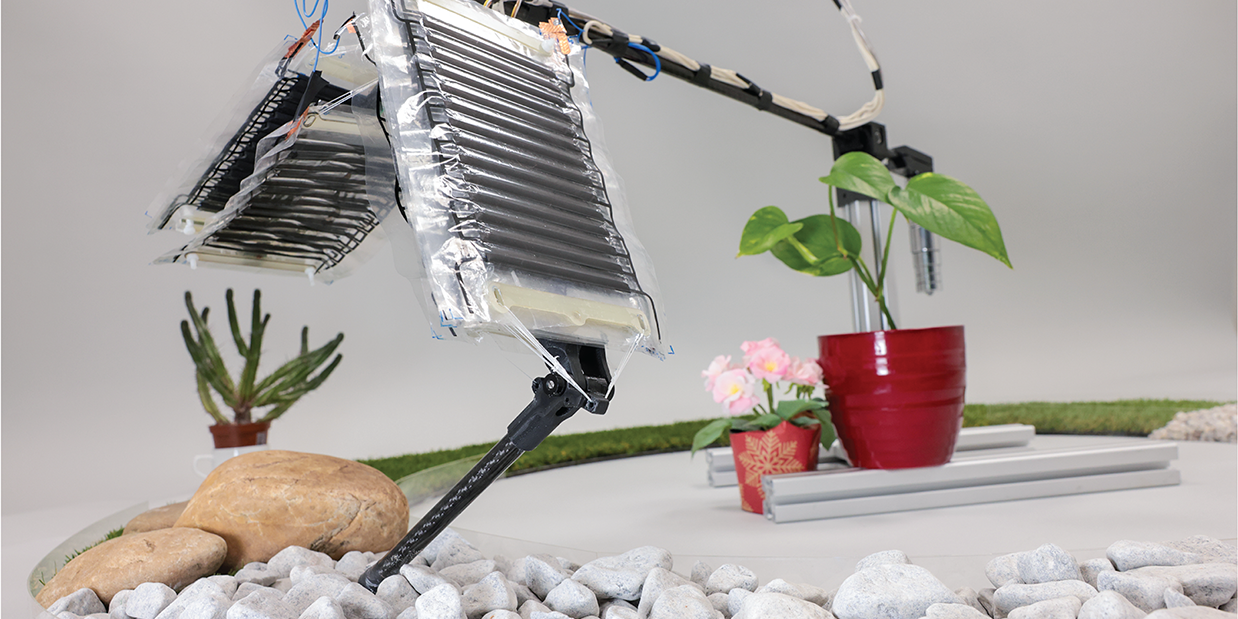Artificial muscles propel a robotic leg to walk and jump
Researchers at ETH Zurich and the Max Planck Institute for Intelligent Systems have developed a groundbreaking robotic leg powered by artificial muscles. Inspired by the natural movements of living organisms, this robotic leg is able to jump and walk across various terrains in a highly agile and energy-efficient manner.

Researchers at ETH Zurich, in collaboration with the Max Planck Institute for Intelligent Systems, have developed a robotic leg powered by electrohydraulic artificial muscles. This innovative system, inspired by the natural movements of living organisms, marks a significant advance in robotic mobility, adaptability, and energy efficiency.
Published today in Nature Communications, the study, led by Prof. Robert Katzschmann of the Soft Robotics Lab at ETH Zurich and Prof. Christoph Keplinger of the Max Planck Institute for Intelligent Systems, showcases a robotic leg that can perform high jumps, fast movements, and adapt to uneven terrains without the need for complex sensors. These capabilities have long been a challenge for traditional robots powered by motors—a technology over 200 years old.
A New Paradigm in Robotic Movement
Unlike conventional robotic systems driven by electric motors, the leg's artificial muscles are based on electro-hydraulic actuators (HASELs). These actuators operate similarly to the way muscles in animals function, enabling the robotic leg to bend and stretch with agility while maintaining energy efficiency.
“This innovation brings us one step closer to robots that mimic the agility of living creatures. The potential applications are vast, particularly in soft robotics and rescue operations,” explains Prof. Katzschmann.
Key Features and Benefits
- Energy Efficiency: The robotic leg consumes significantly less energy compared to motor-driven systems, as its artificial muscles avoid the heat losses commonly associated with electric motors.
- Agility and Adaptability: The leg can jump and adapt dynamically to varying terrains, a vital feature for environments where sensor-driven control systems would be cumbersome.
- Future Applications: While the current model is in its early stages, this technology holds promise for fields such as soft robotics, where gentle and adaptive movements are essential, and rescue robotics, where agility and energy efficiency are crucial for deployment in challenging environments.
A Collaborative Effort
This project is a part of the Max Planck ETH Center for Learning Systems (CLS), a research partnership that explores interdisciplinary topics in natural and artificial learning systems. The research was conducted as part of the collaboration between ETH Zurich’s Soft Robotics Lab, led by Prof. Robert Katzschmann, and the Max Planck Institute for Intelligent Systems. The Max Planck ETH Center for Learning Systems aims to advance research at the intersection of machine learning, artificial intelligence, and robotics. Doctoral students Thomas Buchner and Toshihiko Fukushima co-led the effort, contributing significantly to the development of this breakthrough robotic system.
The team emphasizes that while the current robotic leg is still attached to a rod for testing purposes, future versions could be developed for use in autonomous walking robots, opening the door to even more sophisticated applications.
Read the Full Publication
To explore the complete findings and implications of this research, read the full article published in Nature Communications:
external page https://doi.org/10.1038/s41467-024-51568-3
Stay tuned for more updates as our team continues to push the boundaries of musculoskeletal robotics technology and their autonomous applications.